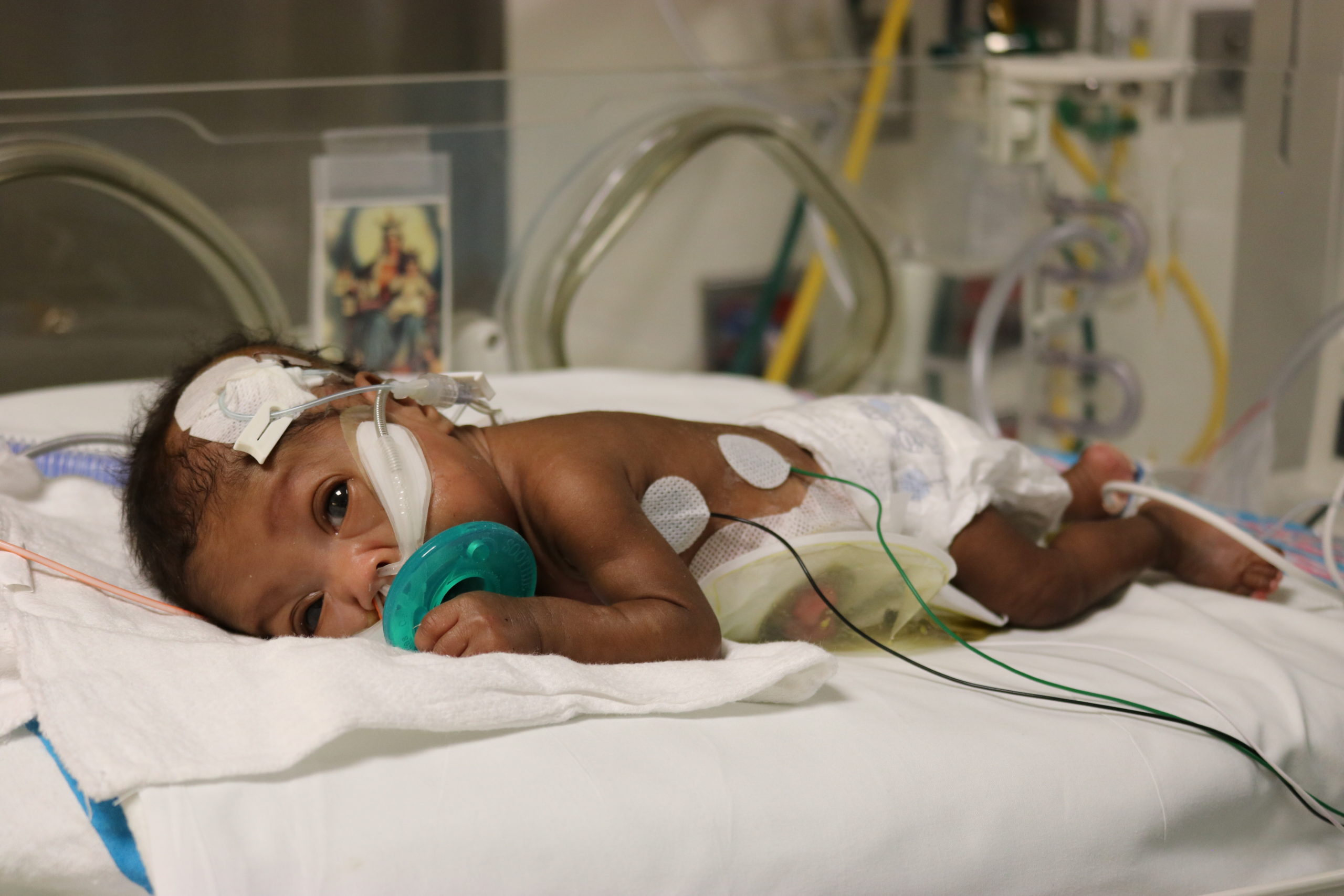NYU Winthrop Hospital announced that it has developed a novel diagnostic method for evaluating a common swallowing and feeding dysfunction that impacts 30–70% of very-low-birth-weight preterm infants.
The condition, dysphagia, can result in serious consequences when milk, rather than reaching an infant’s stomach, goes down the wrong way and penetrates the airway (trachea). This can be devastating to fragile, immature lungs and lead to problems such as pneumonia, lung inflammation, and growth compromise.
NYU Winthrop’s new diagnostic approach for detecting dysphagia involves FEES and VFSS (see descriptions below) done simultaneously, and while the approach is still being studied, it has proven so safe and successful that the hospital determined it could not withhold using the technique in its Neonatal Intensive Care Unit (NICU). NYU Winthrop is believed to be the only medical center in the U.S. – and possibly the world – employing this dual diagnostic approach done simultaneously, which the Hospital believes will soon become a standard of care.
NYU Winthrop simultaneously announced groundbreaking research by the hospital that shows cold formula as an effective therapy for dysphagia in preterm infants.
Dysphagia is related to poor coordination of the swallowing mechanism, which might stem from poor sensory information transported to the brain from the pharynx, which is at the back of the mouth and connects to tubes to the stomach. The NYU Winthrop research showed that cold milk startles the pharynx, triggering the brain to initiate more efficient swallowing movements. A similar cold feeding approach has been used for some time in adult stroke and throat-cancer patients who suffer degradation in swallowing capabilities but has not previously been a standard for the infant population.
“When it comes to preterm infants with dysphagia, NYU Winthrop’s research turns on its head the age-old tradition of warming up milk for a baby,” Chief of the Division of Neonatology at NYU Winthrop Hospital and Professor of Pediatrics Nazeeh Hanna, MD, said. “Feeding a preterm infant cold milk startles the infant’s swallowing mechanism, just as a person might be startled if someone puts an ice cube to their skin, prompting the baby’s swallowing efforts to be much more effective.”
NYU Winthrop’s Division of Neonatal Medicine has shown cold liquid to be very effective in short-duration feedings, with pilot data showing a reduction in dysphagia occurrences from 71% to 26%. These results were published in Dysphagia, a multidisciplinary journal devoted to swallowing and its disorders, with the research titled “Short-Term Effects of Cold Liquids on the Pharyngeal Swallow in Preterm Infants with Dysphagia: A Pilot Study.”
Currently, Dr. Hanna’s research team is investigating the effects of an entire cold-feed on feeding performance in preterm infants. Dr. Hanna expects this research to establish cold milk as a novel therapeutic option to manage dysphagia in preterm infants.
In terms of detecting dysphagia in preterm infants, previously there were limited diagnostic tools. NYU Winthrop’s new technique involves combining two diagnostic tools, FEES and VFSS which, independent of one another, were helpful diagnostic tools but had several limitations. Using them simultaneously has been shown by NYU Winthrop to dramatically improve upon information obtained, with the results yielding more specific and more sensitive information than obtained through just one test.
VFSS is short for Video Fluoroscopy Swallow Study, or X-ray fluoroscopy, which has to be done in the radiology suite. Previously, this was the only available tool to study a preterm infant’s ability to swallow safely, but it is not without some shortcomings. The main disadvantage is the use of radiation, which means that it cannot be used repeatedly despite the infant developing and changing from week to week. Other disadvantages include an inability to use during breastfeeding and associated risks to transporting a sick, preterm infant to a radiology suite.
The other diagnostic tool, Fiberoptic Endoscopic Evaluation of Swallowing, or FEES, is a bedside portable endoscopy test that has been around for decades for use in evaluating dysphagia in adult patients but rarely evaluated in neonates. NYU Winthrop’s preliminary data showed that FEES identified dysphagia in 69% of all swallows compared with 60% for VFSS, and when combined, the two diagnostic tools gave an even more comprehensive picture of the infant feeding issue. NYU Winthrop now uses the two tests for initial screenings of preterm infants, after which follow-up tests can use FEES-only for updating information as the baby further develops.
“Our new dual diagnostic approach is a major advancement in detecting potential health risks among the most vulnerable of the preterm infant population,” added Dr. Hanna. “We expect our discoveries to prompt a paradigm shift in approaches to diagnosing and treating dysphagia in preterm infants, immediately providing clinicians with improved techniques, methodologies, and applications that can impact clinical practice in NICUs throughout the country. These changes in standards of care may improve neonatal outcomes and decrease medical costs.”
NYU Winthrop’s NICU is ranked among the best in the world regarding overall survival of extremely premature babies. This is when compared to more than 800 NICUs by the prestigious Vermont Oxford Registry Network, an authority on the measurement of care and outcomes for high-risk infants all over the world.



